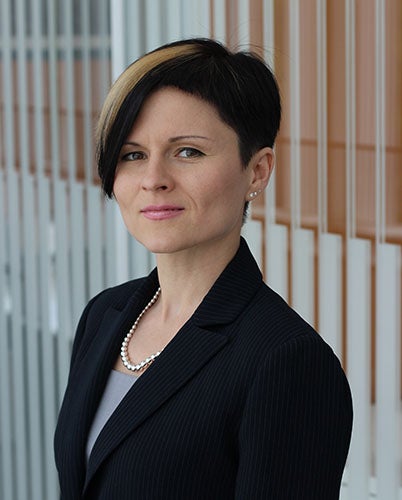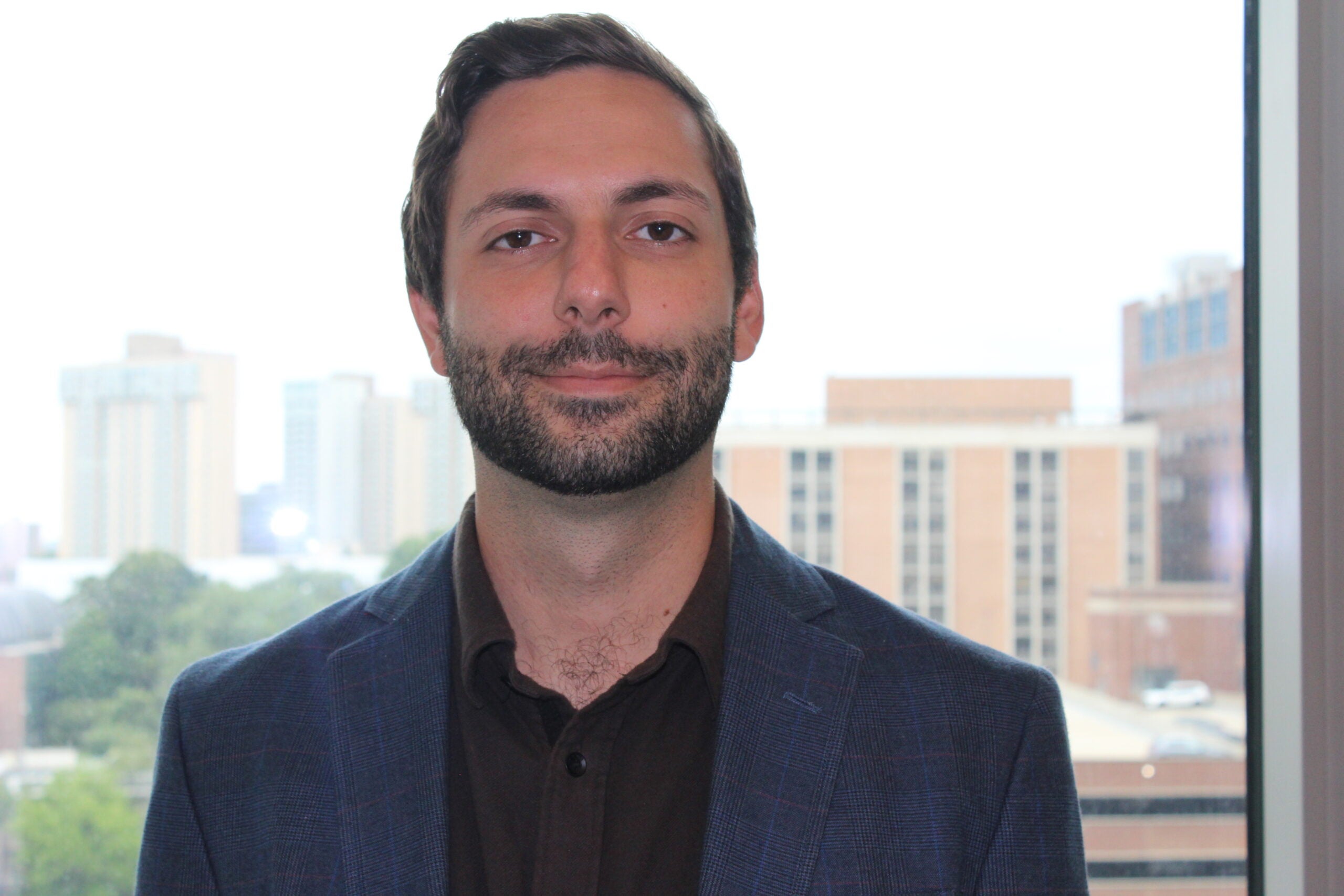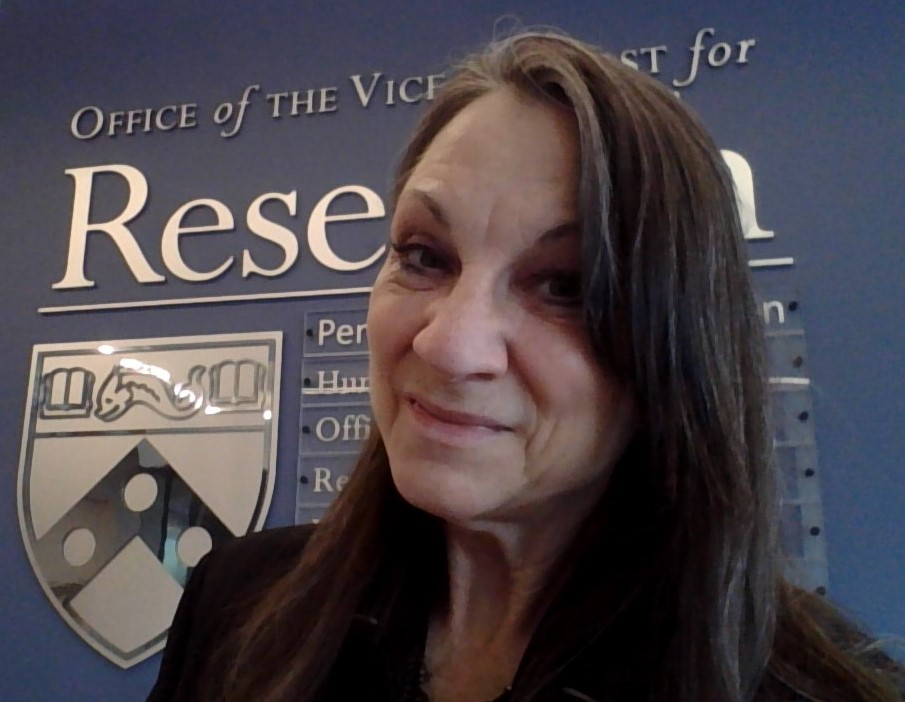Research at Penn produces hundreds of new technologies and inventions annually. One path for PCI to successfully facilitate the commercialization of these technologies is to enter into license agreements whereby Penn grants a company the right use a Penn technology for commercial purposes. PCI has a wide variety of licensing structures and engages with both existing companies and start-ups.
Additionally, PCI has a dedicated team of business development professionals (“Licensing Managers”) that make up the PCI Licensing Groups. Licensing Managers work directly with Penn inventors and industry partners to actively license Penn technologies and assist with other types of contractual commercial relationships.
PCI staff use many complementary resources and strategies to identify potential licensees and to market inventions in collaboration with Penn inventors. Often the existing relationships of the inventors, PCI staff, and other researchers are useful in marketing an invention. Market research can also assist in identifying prospective licensees/marketing targets.
To publicize inventions, PCI leverages conferences and industry events, actively presents available technologies and business opportunities on our website and in our various newsletters and publications, and makes regular direct contact with industry. Faculty publications and presentations are often excellent marketing tools as well.
For Partners
PCI offers a number of different licensing arrangements to accommodate the diverse portfolio of technologies stemming from Penn research activities. There are many important provisions in a license agreement, of particular interest are the following:
1. License Initiation Fee
Typically license agreements contain some upfront consideration. This could be in the form of a cash payment and/or an equity position in a company. Factors taken into consideration when establishing a license initiation fee include the technology’s stage of development, the market opportunity it presents to the licensee, the amount of resources required to bring a product to market and the licensee’s current corporate and funding status.
2. Patent Expenses
Licensees are expected to reimburse Penn for past patent expenses and to be responsible for ongoing patent expenses when licensing a technology involving patent rights, particularly when the licensee is seeking an exclusive grant of rights.
3. Retained Rights
In all license agreements, Penn retains the right to conduct research, educational and clinical activities, and the ability to permit other non-commercial entities to do the same. These activities are core to Penn’s mission and foster the development of new scientific findings and inventions.
4. Diligence Events
Penn includes diligence events in license agreements as a mechanism to ensure a licensee is actively developing the technology that it has licensed for the benefit of the public. Penn and the licensee will formulate diligence events aligned with the licensee’s development plan for the technology. Should a licensee stop developing a technology, Penn will then have the opportunity to identify another commercialization partner.
5. Milestone Payments
Milestone payments are payments made to Penn under a license as a technology is de-risked and achieves certain developmental and/or commercial milestones. Generally, technologies being licensed from a university are early-stage and therefore the value can be uncertain at the time of licensing. Milestone payments are a mechanism to share in the success of a technology and are typically scheduled around various valuation inflection points for the technology or licensee.
6. Royalties
Royalties are paid to Penn when products utilizing the licensed technology are sold. Depending on market standards, royalties are typically either paid as a percentage of sales or as a fee per unit sold.
Available Technologies
Find Penn owned tech available for licensing:
Nanotechnology | Antibody | Optics & Photonics | Medical Devices | COVID-19 | Immunology | Oncology | Materials | Bioengineering | Neurodegenerative Diseases
View all technologiesFeatured Technology
Efficient, scalable and CMOS-compatible nonlinear photonic device based on AlScN
View technology
For Inventors
Most inventors enjoy knowing their inventions are being developed for the benefit of the general public. New and enhanced relationships with businesses are another outcome that can augment one’s teaching, research, and consulting activities. In some cases, additional sponsored research funding and support may result from the licensee.
Licensing FAQs
Questions about licensing technologies regularly arise; regardless of whether an inventor is new to the process of licensing or if they have had a technology successfully licensed in the past. Below, you will find a list of the most frequently asked questions we receive from Penn inventors. If none of the following topics addresses a question you have, then please contact your Licensing Manager
What types of technologies can be licensed?
Generally, licenses include a grant of rights to a form of intellectual property such as an issued patent or pending patent application, a copyright, a piece of software, a device, a tangible research material or reagent, a defined data set, etc. PCI has adaptable license templates to accommodate the wide range of technologies created at Penn.
What can I expect as a result of my technology being licensed?
There are multiple benefits to the inventor after a technology has been licensed including:
- The satisfaction of knowing an invention is being developed for the benefit of the general public.
- New and enhanced relationships with business that may augment one’s teaching, research, and consulting activities. In some cases, additional sponsored research funding and support may result from the licensee.
- Additionally, as required by the Bayh-Dole Act and per University policy, a portion of any net income from a license agreement is shared with inventor(s). For additional information on how licensing income is distributed, please see the University’s Patent and Tangible Research Property Policies and Procedures.
Can know-how be licensed?
Because know-how often exists in the individual’s mind and is based off a researcher’s skillset, Penn will license know-how if needed by the interested party on a non-exclusive basis and only when it can be reduced to a tangible form. Exclusive licensing of know-how conflicts with Penn’s mission of broadly disseminating knowledge and could negatively impact a faculty member’s ability to conduct future research that might require use of that know-how.
How is a company chosen to be a licensee?
A licensee is chosen by PCI in consultation with the inventors, based on its ability to commercialize the technology for the benefit of the general public. Sometimes an established company with experience in similar technologies and markets is the best choice. In other cases, the focus and intensity of a startup company is a better option.
How are most licensees found?
Potential licensees for a given technology are often already known to the inventors because of existing or past relationships. Thus, close communication and collaboration between PCI and inventors are valuable sources of potential licensees. Licensees are also identified through existing relationships and active marketing outreach of PCI staff. We attempt to broaden these relationships through contacts obtained from website posting inquiries, market research, industry events, and further cultivation of existing licensing relationships.
How long does it take to find a potential licensee?
Although for some technologies potential licensees are immediately evident and interested, it can take months and sometimes years to find a licensee for other technologies. When identifying a potential licensee, important factors to be considered include the novelty and impact of the invention (sometimes referred to as its “disruptive potential”), its stage of development, competing technologies, and the size of the market and the market’s activity level. Most university inventions are early stage and thus require substantial development and investment, which can make it challenging to attract and secure an immediate licensee.
What does a licensee do after licensing a technology?
Most licensees continue to develop an invention to validate the technology, reduce its risk, demonstrate reliability, and satisfy the market requirements for adoption by customers. Documentation for training, installation, and marketing is often created during this phase along with benchmarking efforts to demonstrate the product/service advantages (i.e., societal benefit) and to position the product in the market.
What is the relationship between an inventor and a licensee, and how much of my time will it require?
Many licensees request, and sometimes require, the active assistance of the inventor to facilitate their commercialization efforts, at least in the early stages of development. This assistance can range from infrequent, informal interactions to a more formal collaboration. Working with a new business startup in contrast to working with an established company can, and often does, require substantially more time, depending on your role in or with the company and your continuing role within Penn. Under all circumstances, your participation with a startup or well-established company is governed by Penn conflict-of-interest policies.
Can there be more than one licensee for a single technology?
Yes. An invention can be licensed to multiple licensees, either non-exclusively to several companies or exclusively to several companies, each for a unique field-of-use (application) or geography.
How is the decision made as to whether to commercialize software with a traditional or an “open source” license?
Generally, PCI supports Penn software developers who choose to make their programs available to the public through open-source mechanisms, provided that open sourcing is consistent with any obligations to sponsors and funders.
What revenues are generated in a license agreement?
Most licenses have initial or intermediate licensing fees that are relatively modest until a product is ready for sale on the open market (especially for relatively cash-strapped startups) but on rare occasion can reach hundreds of thousands or even millions of dollars. Royalties on the eventual sales of the licensed products can in some circumstances generate significant recurring revenues, although it usually takes many years to occur, if at all. Equity, if included in a license, can also yield long term returns, but only if a successful equity liquidation event (public equity offering or a sale of the company, etc.) occurs. A recent study of licenses at U.S. universities demonstrated that less than 1 percent of all licenses yield over $1 million back to the university to share with the inventor(s) over their entire lifespan.
Despite these relatively low financial odds, it is important to bear in mind that although most licenses do not yield substantial revenues, almost all of them involve the productive connection between the creator of a technology and a commercial development partner that often further advances the value of the discovery or benefits to society. Thus, the rewards of an invention being further developed and potentially reaching the market are often more significant than the financial considerations.
What happens to an invention if the startup company or licensee is unsuccessful in commercializing the technology? Can the invention be licensed to another entity?
Licenses, particularly exclusive ones, typically include performance milestones that, if unmet, may result in the termination of the license and a return of the technology to Penn. This termination allows for subsequent licensing to another business. Licensees may also choose to sublicense all or a portion of their rights to another company to aid in the commercialization and development of the technology that supersede the original licensee’s capabilities and interests.
Licensing Contacts
Perelman School of Medicine Licensing

Kultaran Chohan, PhD
Executive Director

Lina Axanova, PhD
Senior Associate Director of Licensing

Joyce Kamande, PhD
Assistant Director

Sangeeta Bafna, PhD
Associate Director

Inyoung Lee, PhD
Licensing Officer

Jessica Casciano, PhD
Assistant Director

Shilpa Bhansali, PhD
Associate Director






